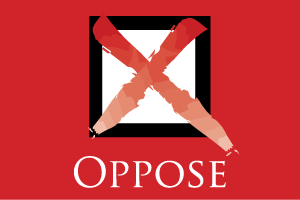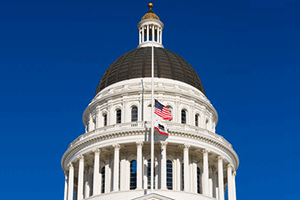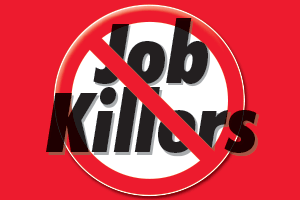
Single-Payer Health Care
Government-Run Health Care Reduces Choice, Increases Costs
During the 2024 legislative session, a contingency of California legislators led by Assemblymember Ash Kalra (D-San Jose) reintroduced a bill that attempted to implement a government-run, single-payer health care system in California. This convoluted and extremely expensive system eradicates personal choice by eliminating health care coverage options and forcing all Californians into the state-run system. Over the years, polls have found that voters preferred keeping their own health care coverage rather than switching to a government-run program propped up by astronomical taxes. The Legislature should respect the will of those they represent and allow for personal choice when it comes to health care coverage.
Single-Payer Health Care Defined
In an authentic single-payer health care system, private and employer-provided health insurance is nonexistent. Rather, health care is delivered through public or private hospitals and health care providers. The expenses associated with the care are paid for by public financing, which means the government obtains the money by taxing employers, employees, and individuals. While the health care is typically delivered at low-to-no cost at the point of use, it is in no sense “free,” since higher taxes and consumer copays foot the bill for the care.
Single-Payer Health Care Is Not Free Health Care
There’s nothing free about a government-run health plan. During the 2024 legislative session, AB 2200 was introduced by Assemblymember Kalra with a number of co-authors. This was similar to SB 562 which was introduced by then-Senator Ricardo Lara (D-Bell Gardens) in 2017, and AB 1400 introduced by Assemblymember Kalra in 2021. According to SB 562’s Senate Floor analysis, a single-payer proposal in California was estimated to cost more than $400 billion annually.
More recently, the Healthy California for All Commission estimated that total health care costs annually exceed $500 billion in California. This amounts to one-seventh of our gross state product and would more than double our state’s budget.
In 2019, the Committee for a Responsible Federal Budget conducted a Medicare for All analysis and found that a single-payer model would potentially be funded by payroll tax increases, income surtaxes, value-added taxes, mandated public premiums, doubling individual and corporate income tax rates, or a combination thereof.
In 2008, the Legislative Analyst’s Office (LAO) analyzed the cost of a single-payer system in California and concluded that more than $210 billion would be needed in the first year to sustain such a system and the cost would increase up to $250 billion in subsequent years. Even with a 12% payroll tax paid both by employers and employees under that measure, the report predicted a net shortfall of $42 billion in the progran’s first full year of implementation and even higher thereafter. Just to cover the shortfall, a 16% tax on employers and employees was estimated by the LAO, resulting in a multibillion-dollar-tax increase on Californians.
Vermont attempted to enact a single-payer system in 2011, but the efforts were derailed in 2014 when the Legislature failed to approve an accompanying 11.5% payroll tax on all employers and an individual income tax increase of up to 9.5%. Vermont’s plan would have doubled the state budget and then-Governor Peter Shumlin said the burden would have posed “a risk of economic shock.” When asked about the failed single-payer effort, Governor Shumlin said, “What I learned the hard way, is it isn’t just about reforming the broken payment system. Public financing will not work until you get costs under control.”
Health Care Coverage Already Available
When health care data is examined, it is clear that coverage is available in California. In 2022, 35.9 million Californians were enrolled in health care coverage — a record number. Of this number, 13 million were enrolled in Medi-Cal managed care coverage, 14.1 million were commercial enrollees and 5.8 million people were covered by a self-insured plan. Covered California reported that 1.74 million people enrolled in their plans in 2023.
According to a March 2023 Policy Brief by the University of California Los Angeles Center for Health Policy Research and University of California Berkeley Labor Center, after the January 1, 2024 Medi-Cal expansion, California’s uninsured population will decrease to a record low of 2.57 million people under the age of 65. California continued to expand Medi-Cal coverage for undocumented residents over the last several years.
Government-Run Health Care Less Efficient, Less Effective
The goal to provide health coverage for all Californians is laudable but establishing a state health care bureaucracy is the wrong approach. The California Chamber of Commerce fundamentally disagrees that government systems are more efficient than private businesses and that a single-payer system would be less costly than the current private system.
Single-payer health care will reduce the level and quality of health care and benefits currently enjoyed by millions of Californians. It will lead to increasingly long wait times to see a physician and will take away choice — not just choice in physicians, but choice in coverage. Under current law, those who wish to buy more, less or different coverage than others often can make those choices, just as those who have other priorities can exercise them in the market. Under single-payer, one size fits all, no matter what an individual’s preference might be.
Californians Have Rejected Government-Run Health Care
California voters have twice rejected a government-run health care system at the ballot box — in 1994 and 2004. Additionally, CalChamber polling has found that voters overwhelmingly preferred to keep their current health insurance over switching to a single-payer approach.
Voters strongly support subsidies for people who cannot afford their own health care and for those who have pre-existing health conditions but were not ready to embrace government-run health care.
Constitutional and Federal Challenges
The state constitutional barriers to a single-payer system include the Proposition 4 appropriations limit and the Proposition 98 education finance guarantee. The Proposition 4 limit constrains overall state spending to growth based on population and inflation factors. The large tax increase required by a single-payer system would push spending above the limit.
California’s Proposition 98 creates a school finance formula that requires a portion of any new general revenues to be dedicated to schools. The tax increases necessary to pay for single-payer health care would require a companion amendment to the California Constitution that exempts the new revenues from both the Proposition 4 appropriations limit and the Proposition 98 school finance formula. The constitutional amendment would require voter approval.
Even if state constitutional amendments were approved, California would have to obtain approval from the federal government to allocate federal Medicare and Medicaid funding to a California government-operated, single-payer health care system. Given the incoming Republican administration, such a waiver is not likely. Without the necessary federal funding, California could not afford to proceed with a single-payer system.
CalChamber Position
Californians need to have affordable, accessible, quality health care. While Californians experience premium increases on an annual basis, hundreds of billions of dollars in new taxes and complete restructuring of the health care system is not the answer to insuring the uninsured and making unaffordability affordable. A single-payer system abrogates the freedom individuals have to pursue health care coverage of their choosing.
Single-payer health care does not equate to free health care, and the exorbitant taxes and costs associated with this system will systemically eradicate new jobs while driving out existing industries. The consequences associated with adopting a single-payer health care model should give the Legislature serious pause in pushing forward any proposal in California.
February 2025
Agriculture and Resources
California Environmental Quality Act (CEQA)
Climate Change
Education
Energy
Environmental Regulation
Health Care
Housing and Land Use
Immigration Reform
International Trade
Labor and Employment
Legal Reform
Managing Employees
Privacy
Product Regulation
Taxation/Budget
Tourism
Transportation
Unemployment Insurance/Insurance
Water
Workers’ Compensation
Workplace Safety




